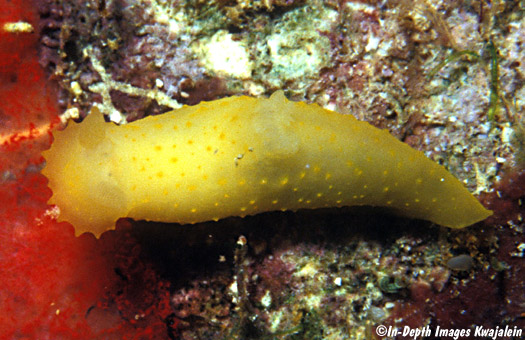
Gymnodoris citrina is probably the most common gymnodorid in the Marshalls. While you never see many at once (for reasons noted below), a few can be found in a variety of habitats and during all times of the year. We have seen them at Enewetak, Kwajalein, and Bikini Atolls, usually under rocks on shallow lagoon reefs and pinnacles. Additional specimens have been found at Majuro Atoll. At least 200 specimens have been observed, and sizes have ranged up to about 30mm. As the pictures below show, the species varies in background color from white to yellow-orange. These were first reported in the Marshalls as Gymnodoris citrina from Enewetak Atoll by Young (1967), although I suspect that the Gymnodoris bicolor reported by Marcus & Burch (1965) two years earlier is actually this species.

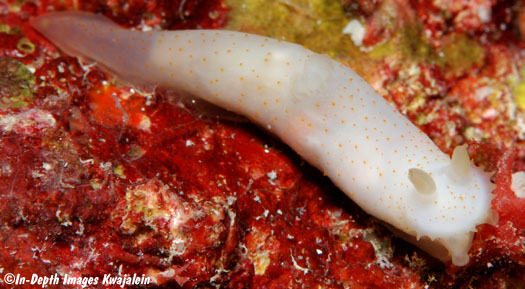
The photo below is from Stan Jazwinski at Kwajalein Atoll.
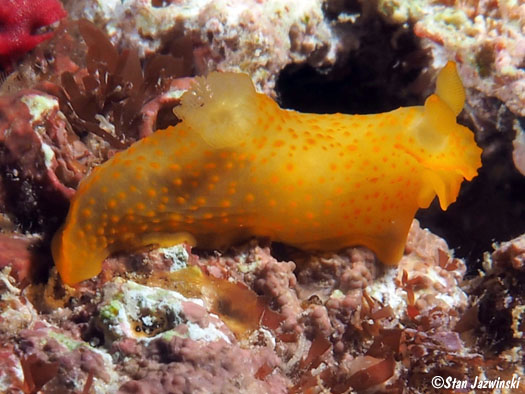
The egg mass of Gymnodoris citrina is yellow to orange.
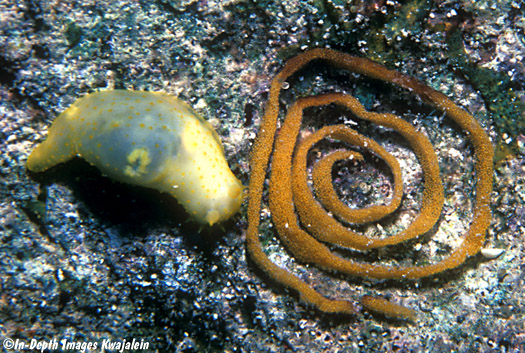
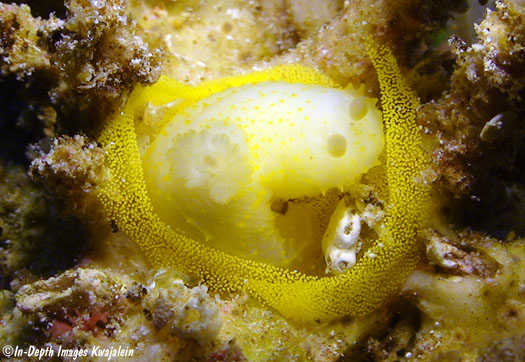
Gymnodoris citrina's diet consists of other gymnodorid nudibranchs as well as their eggs. In the photo below, a G. citrina is feeding on the eggs of Gymnodoris striata.
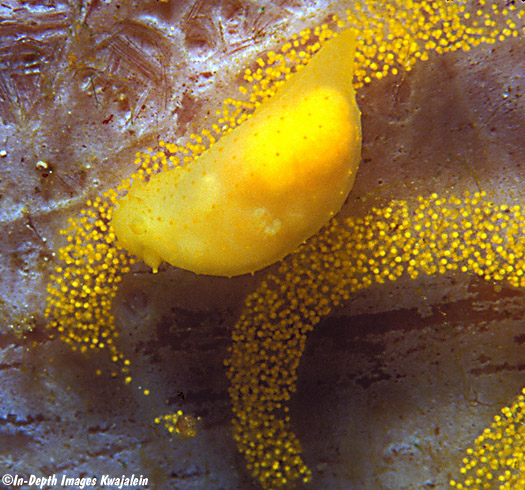
In addition to eggs and other species of Gymnodoris, G. citrina will also eat members of its own kind if it gets the chance. Curiously, the hermaphroditic animals mate while trying to eat each other. The text of an article on cannibalism and mating in Gymnodoris citrina one of us wrote for the Hawaiian Shell News (vol. 40, no. 2, February 1992) can be found here, but a sequence of photos is below (combined from two sets of photos). First, two individuals come close enough to detect each other.
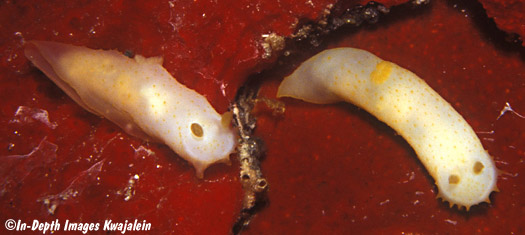
They grasp each other. Note that the reproductive mass is already protruding from the individual on the left.
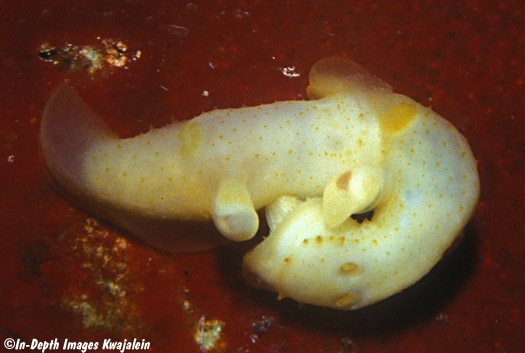
Here we switch to another pair. Color of these nudis can vary from white to yellow, and the different colors of the two in the remaining photos help us see what is happening. The reproductive organs of the white specimen can be seen within the translucent protrusion, which elongates to a tentacle that coils up tightly with the same structure on the yellow animal.
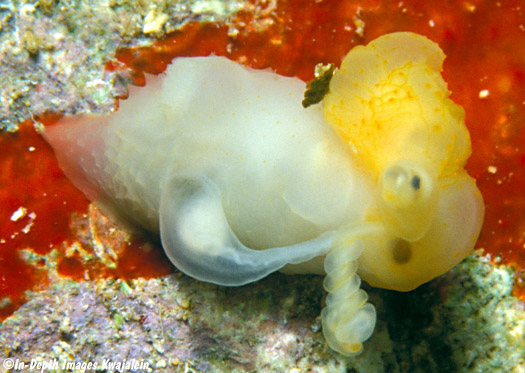
It looks as though the white one is gaining the upper hand as the yellow one is draw into its mouth. Mating is still proceding at this stage.
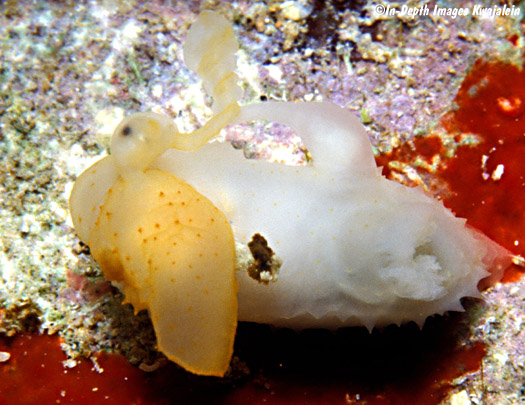
There's only a little bit of the yellow one's foot left, but its reproductive organs are still intertwined with that of its predator.
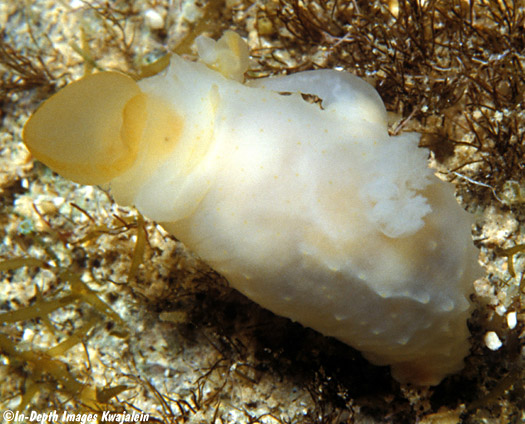
The yellow one is virtually gone. All that is left is the last bit of reproductive organ barely sticking out of the white one's mouth. Mating proceeds to the very end, I suppose. But only the white one is going to be able to put down an egg mass after this mating.
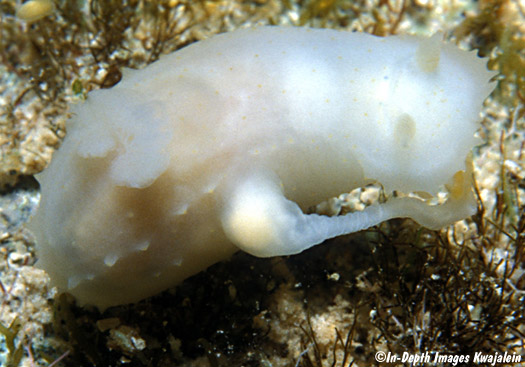
The specimen below found at Majuro Atoll by Ken Cone and Beth Van Zummeren appears to be a heavily spotted Gymnodoris citrina.
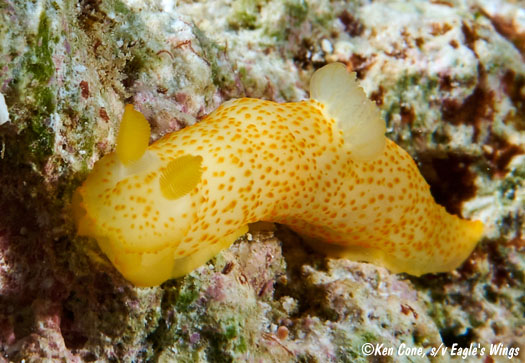
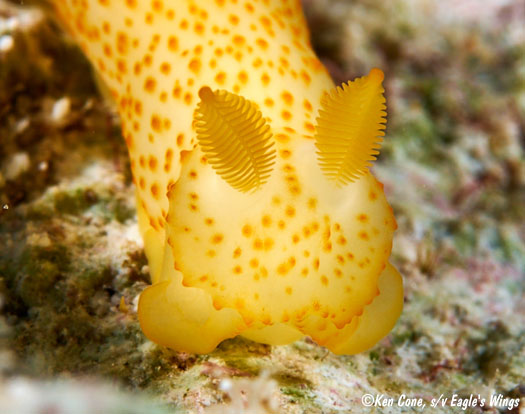
This one from Majuro by Ken Cone and Beth Van Zummeren had odd white markings in the skin.
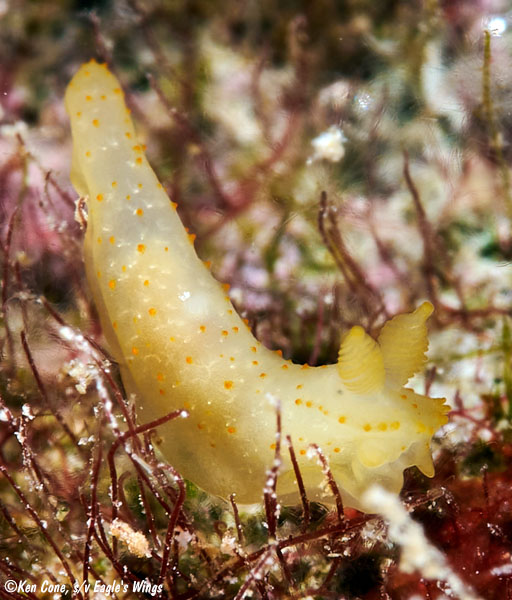
Created 1 January 2007
Updated 2 December 2021